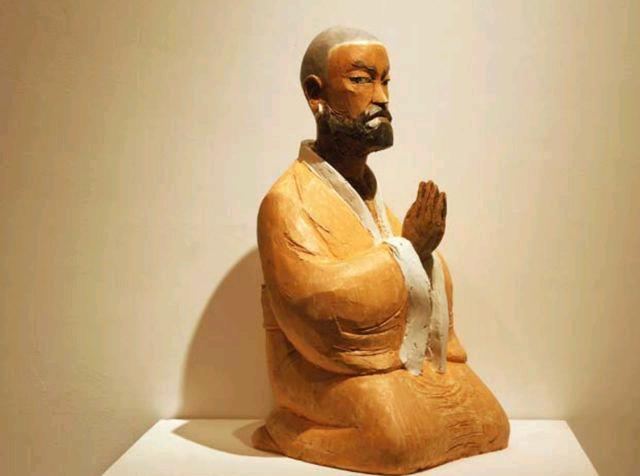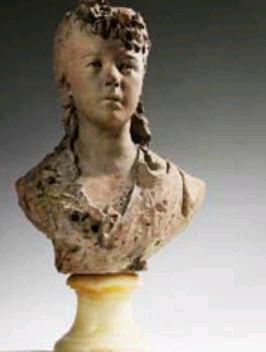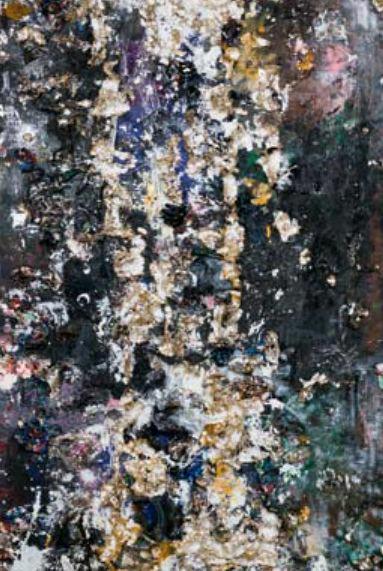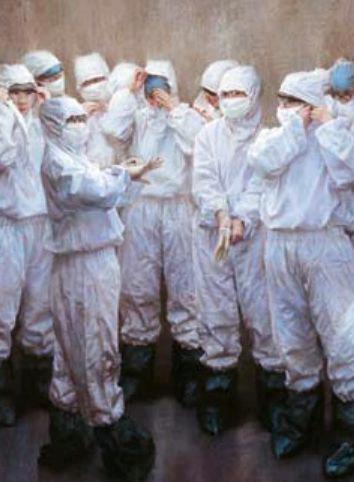Artistic Horizons
A metropolis on the sea, Shanghai enjoys the first rays of sun rising above the eastern horizon, which constantly inject vitality and inspiration into the city. In 1986, the Shanghai Branch of the Chinese Artists Association held its first Sea Horizon Painting and Sculpture Exhibition, displaying 85 pieces from 26 avant-garde and distinctive young artists. In that era, Chinas art circles were already showing great variety, heavily influenced by the emergence of diverse artistic philosophies, events and publications from abroad. The explosive energy of the changing time empowered artists to transcend traditional frames. Against this backdrop, the 1986 Sea Horizon Painting and Sculpture Exhibition was a pioneering, diverse, exploratory and highly valuable show. The XV Sea Horizon Painting and Sculpture Exhibition selected 80 artists from past Sea Horizon exhibitions and displayed three representative works from each. Sea Horizon has become a brand flavored with Shanghai culture and a platform to promote outstanding young artists.
December 27, 2014 — June 19, 2015 China Art Museum, Shanghai
The Thinker in Beijing
One campaign to celebrate the 50th anniversary of the establishment of diplomatic ties between China and France, Rodin, loeuvre dune vie is being exhibited at the National Museum of China. A total of 139 original works by Auguste Rodin, a great French sculptor of the 19th Century, are on display including The Thinker, The Age of Bronze, Monument to Balzac, The Gates of Hell and other representative works ranging across the artists creative phases. Moreover, many drawings of Rodins gypsum sculptures are also on display, enabling art lovers to gain a glimpse at the thinking process of the sculpting master.
November 28, 2014 — March 22, 2015 National Museum of China, Beijing
Michael Chow: Voice for My Father
An innovative painter firmly rooted in the Chinese expressionist tradition, Michael Chow returned to art in 2012 after a hiatus of nearly 50 years. Born in 1938 and raised in a storied Shanghai household in the 1930s and 40s, Chow found himself studying art in London soon after the founding of the Peoples Republic. After training at St. Martins and showing his work in the UK in the 1960s, he went on to found the iconic Mr. Chow restaurant chain in London and eventually opened branches in New York and Los Angeles, where he lives today. “Voice for My Father” presents three bodies of work in a parallel fashion. On display at UCCA is a series of new paintings by Michael Chow. Known for the unconventional usage of materials ranging from gold leaf to raw eggs, Chows paintings are characterized by a unique balance between order and chaos, rigor and improvisation, freedom and control. A massive polyptych, Four Seasons stretches nearly twenty meters long and serves as the centerpiece of the exhibition. In the Long Gallery, Chows paintings are complemented by his portrait collection which includes works by artists such as Andy Warhol and Jean-Michel Basquiat, many acquired directly from the artists or received as gifts due to friendship and collaboration with Chow over the years. Alongside them are archival images and documents related to Chows father, Zhou Xinfang (1895-1975), one of the most famous Peking Opera artists of the twentieth century.
January 23 — March 22, 2015 Ullens Center for Contemporary Art (UCCA), Beijing
Peoples Images
Chinese traditional art heavily focuses on flowers, birds and landscapes. Some work involves figures, but they are usually portraits of ladies and officials and rarely are regular people realistically depicted. In the 20th Century, after the introduction of oil painting and decades of heavy influence of Western art, Chinese art began to focus more on social reality and real life, depicting ordinary people as well as epoch-making figures. The exhibition Peoples Image at the National Art Museum of China includes images of people engaging in different industries ranging from factory work to farming, medicine and sports. Characterized by varied expressions and styles, the images of individuals and groups vividly catalog the features of the times.
January 12 — March 11, 2015 National Art Museum of China
Shi Jing & Wu Didi
Nature serves as the source of inspiration for both painters, but they approach it from drastically different perspectives. Shi Jing is inspired by views of the planet from outer space, vast perspectives, mountain ranges and impressive landscapes, but shows reluctance to approach these themes in a traditional way. Wu Didi, on the other hand, focuses on the small pieces that form the natural world – weeds, stones, and insects, for example – and paints them in minute detail on blank canvases. Dialogue between the two artists is stimulating to say the least. Both artists approach Chinese traditional themes, whether landscapes by Shi Jing or bamboo and insects by Wu Didi, in a highly personal manner that preserves the continuous appeal of the time-honored subjects.
January 8 — February 21, 2015 Chambers Fine Art, New York
China Pictorial2015年2期
